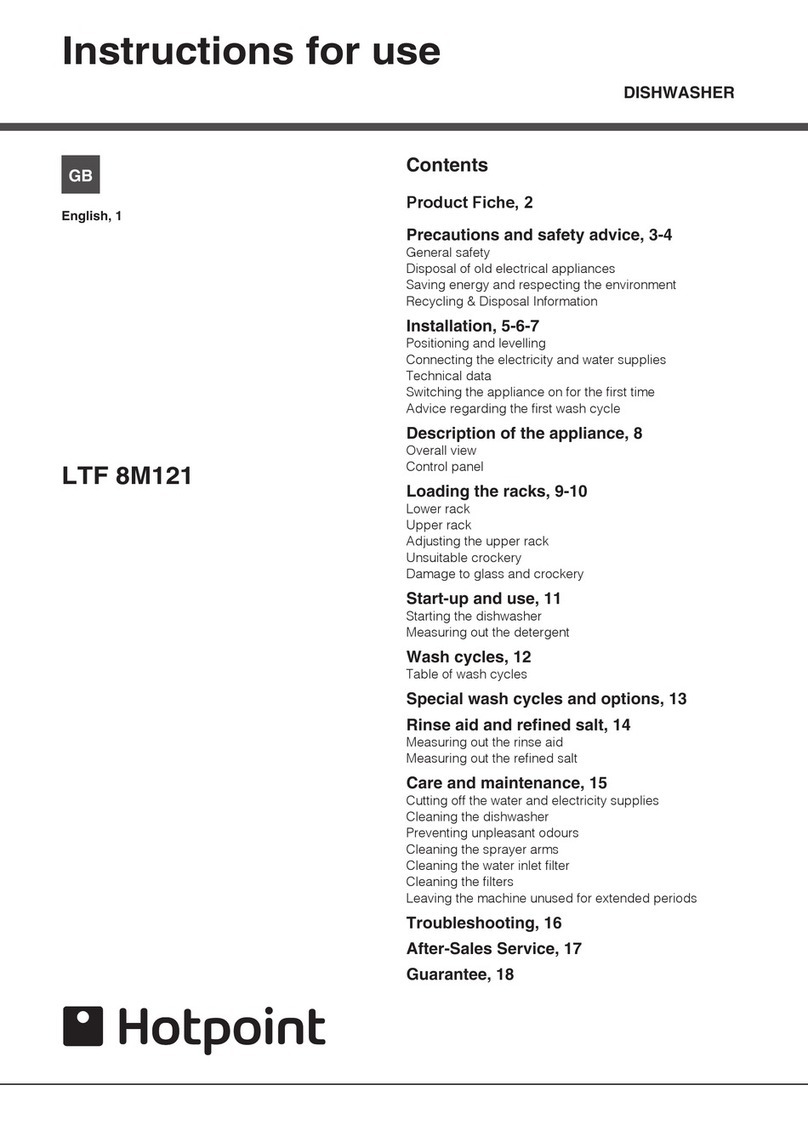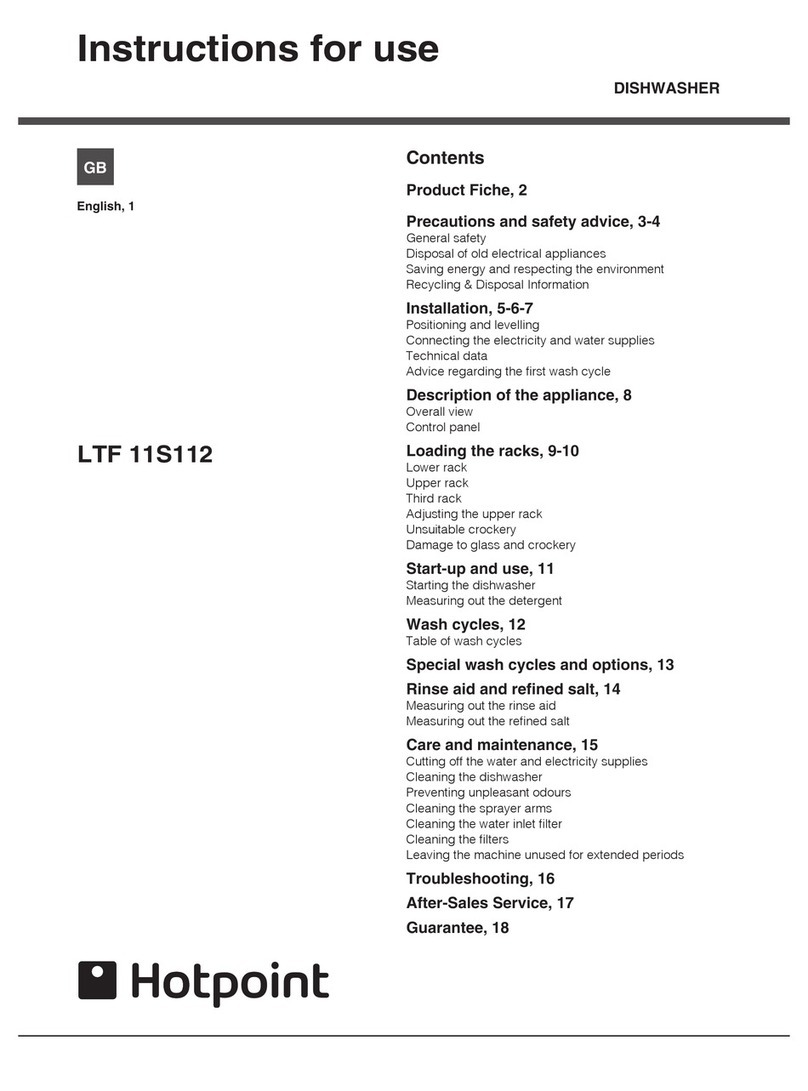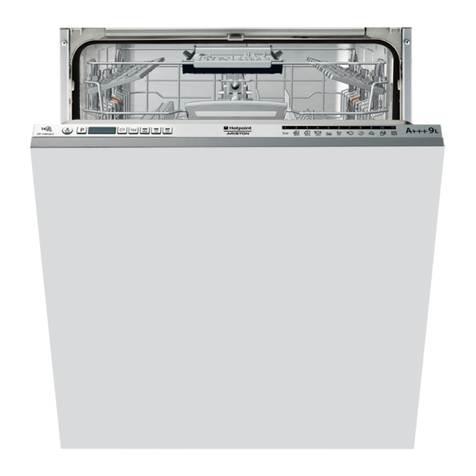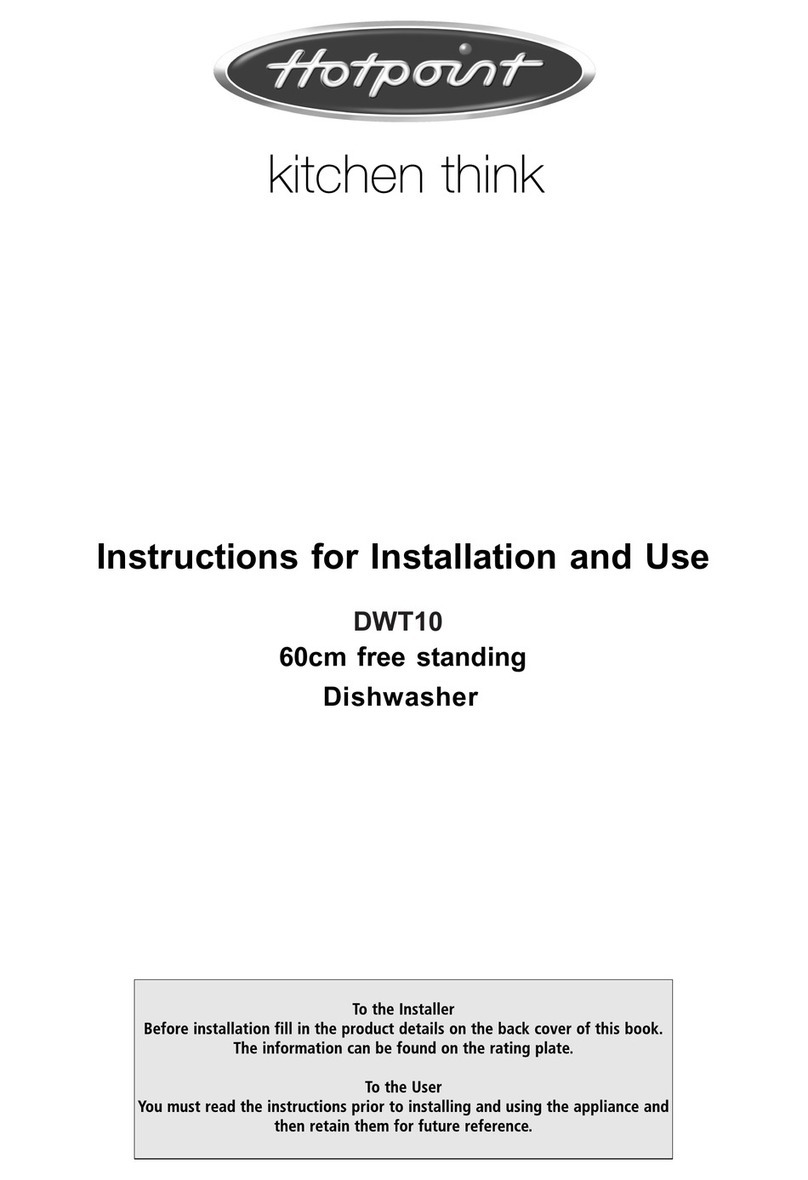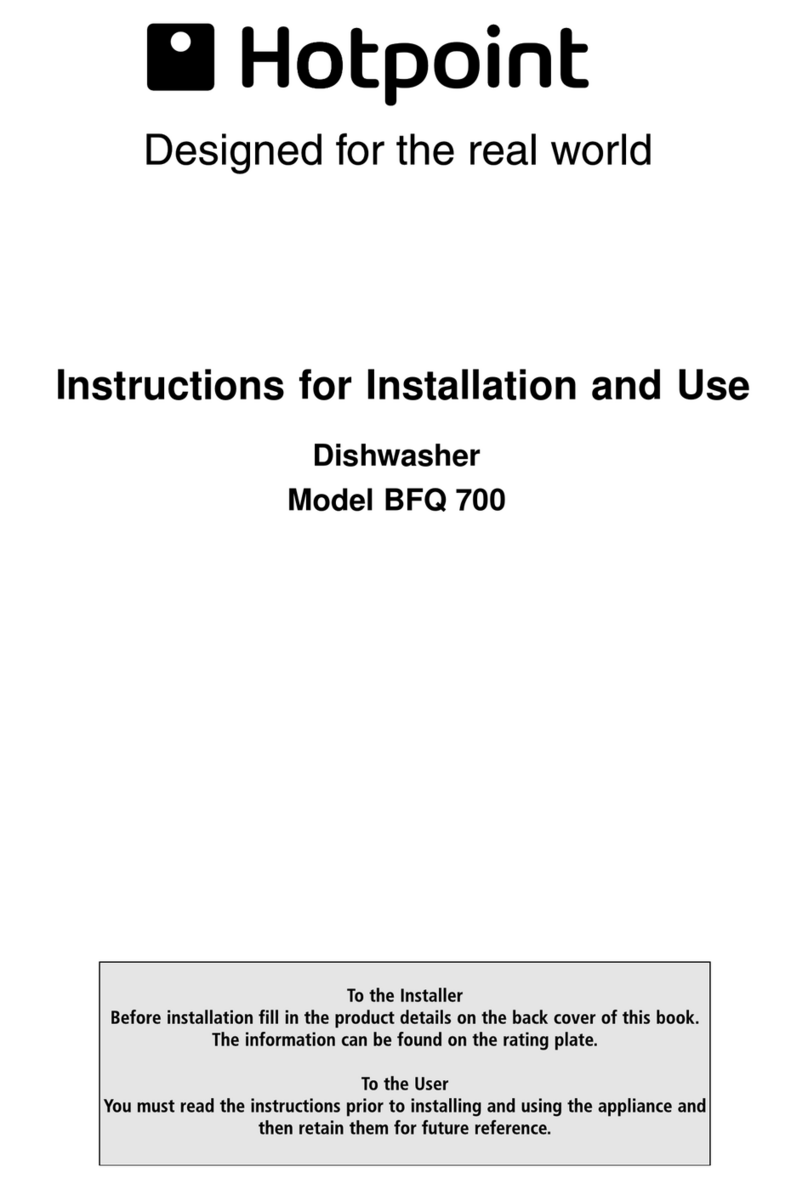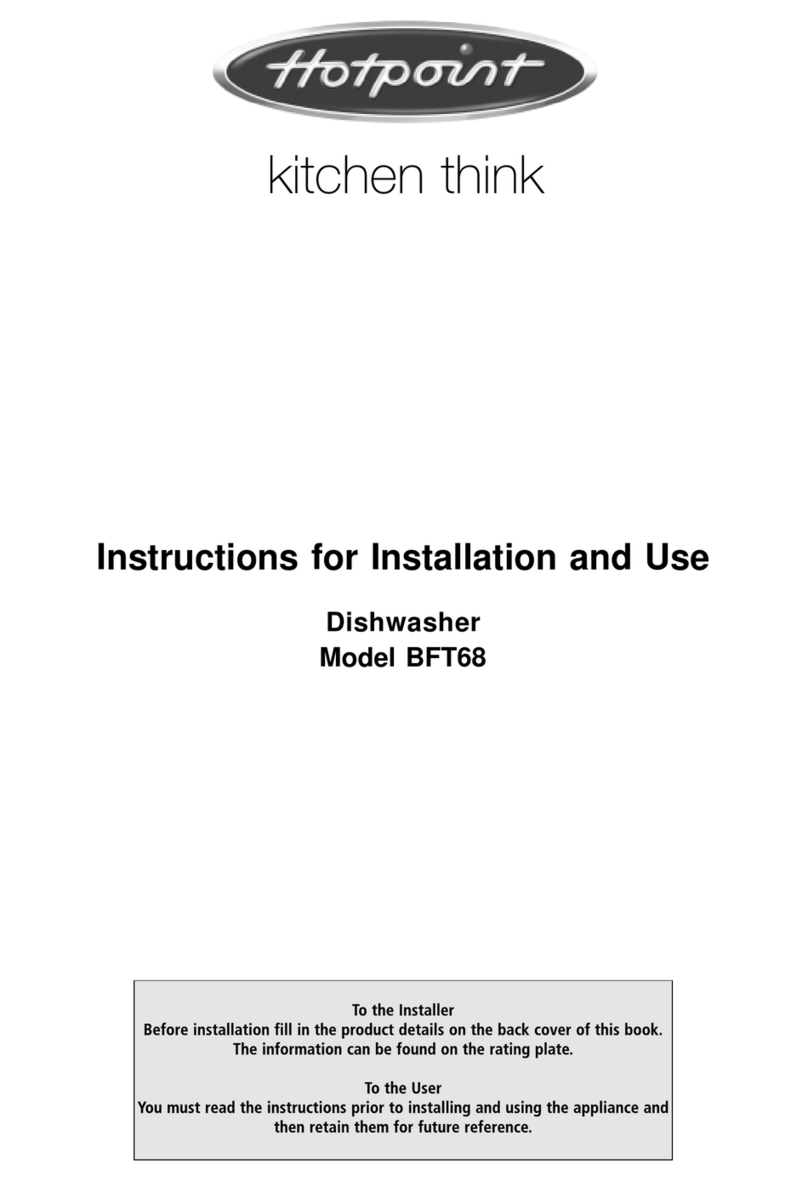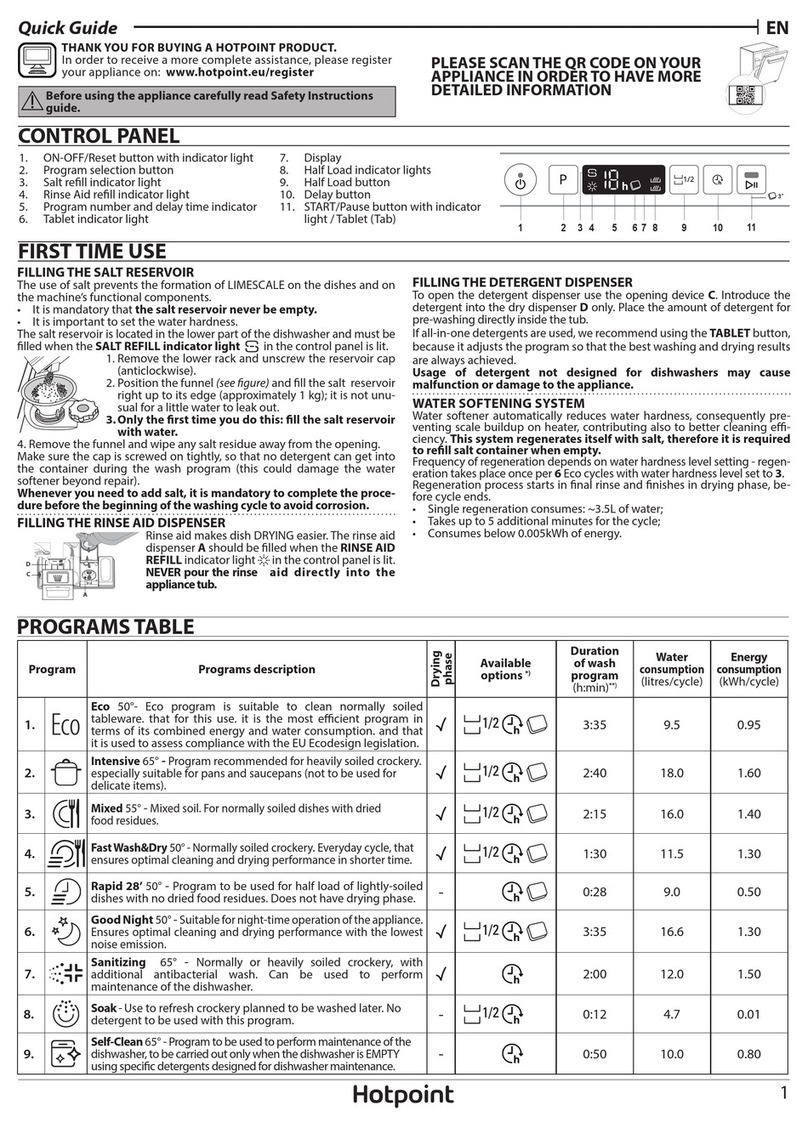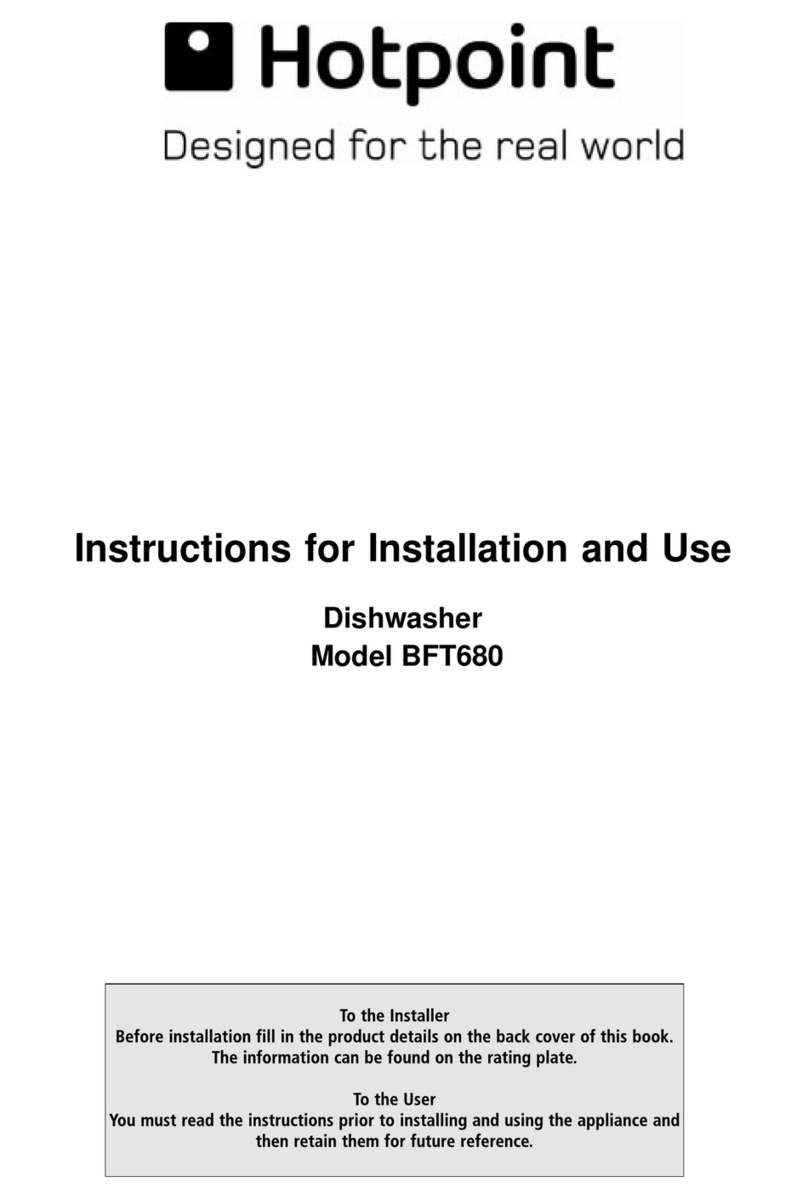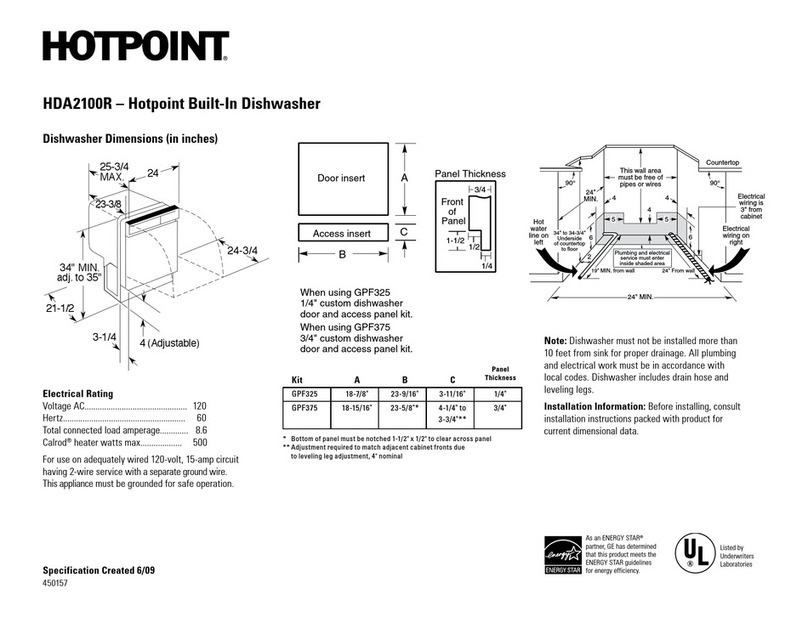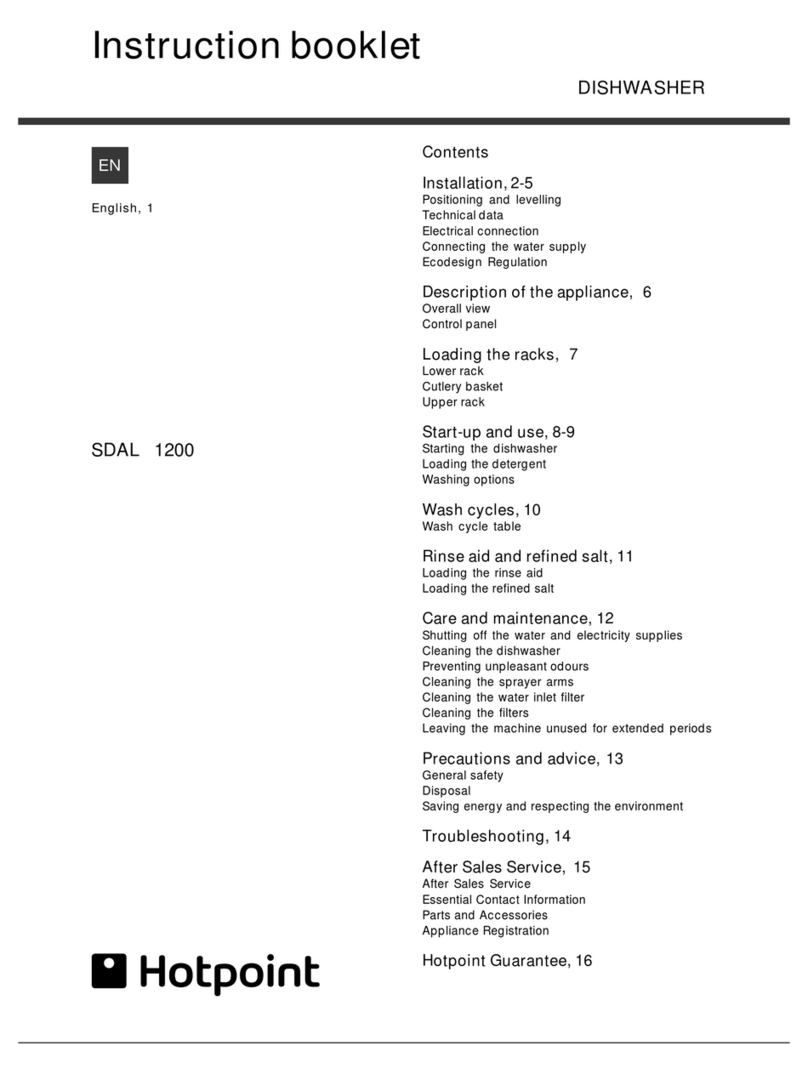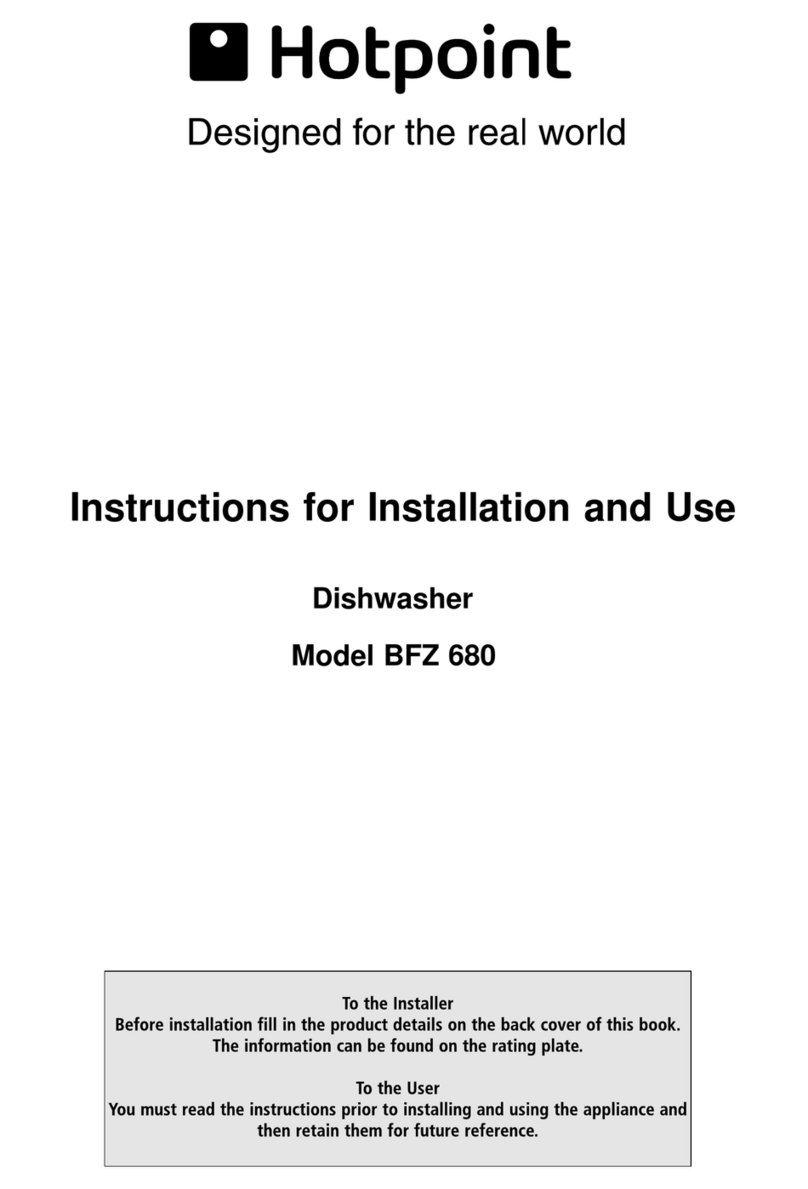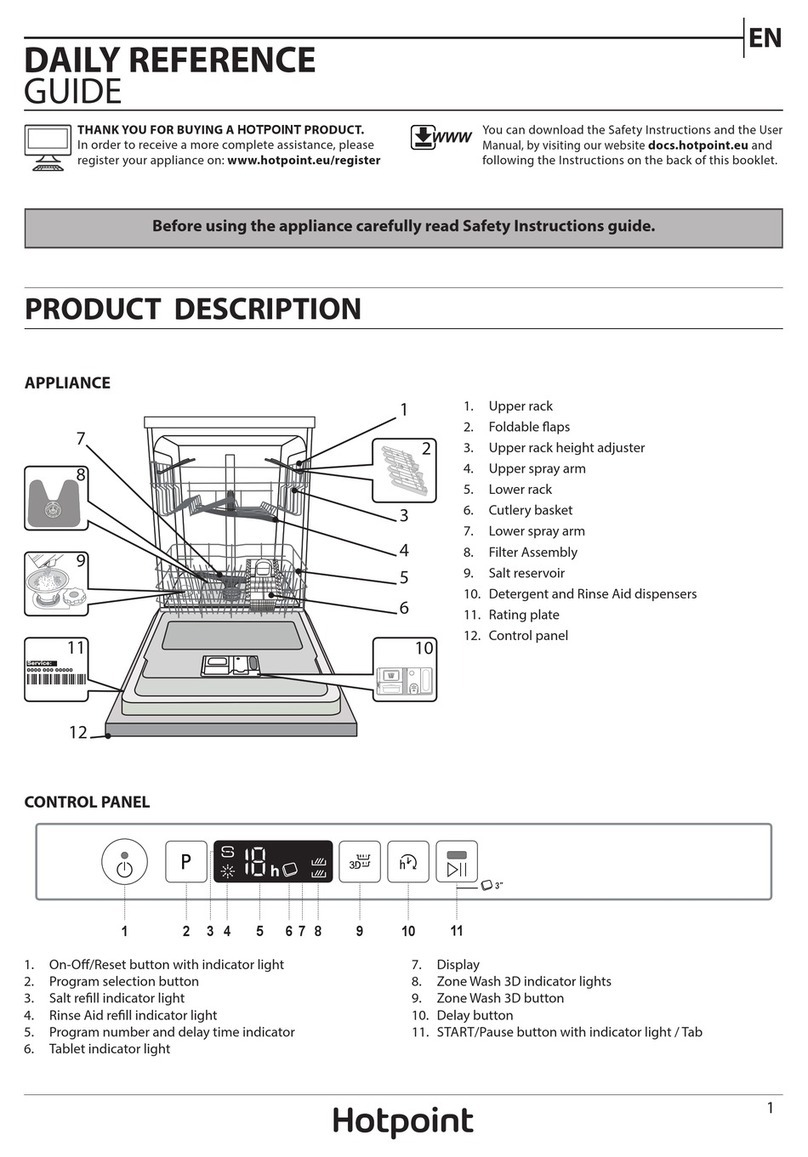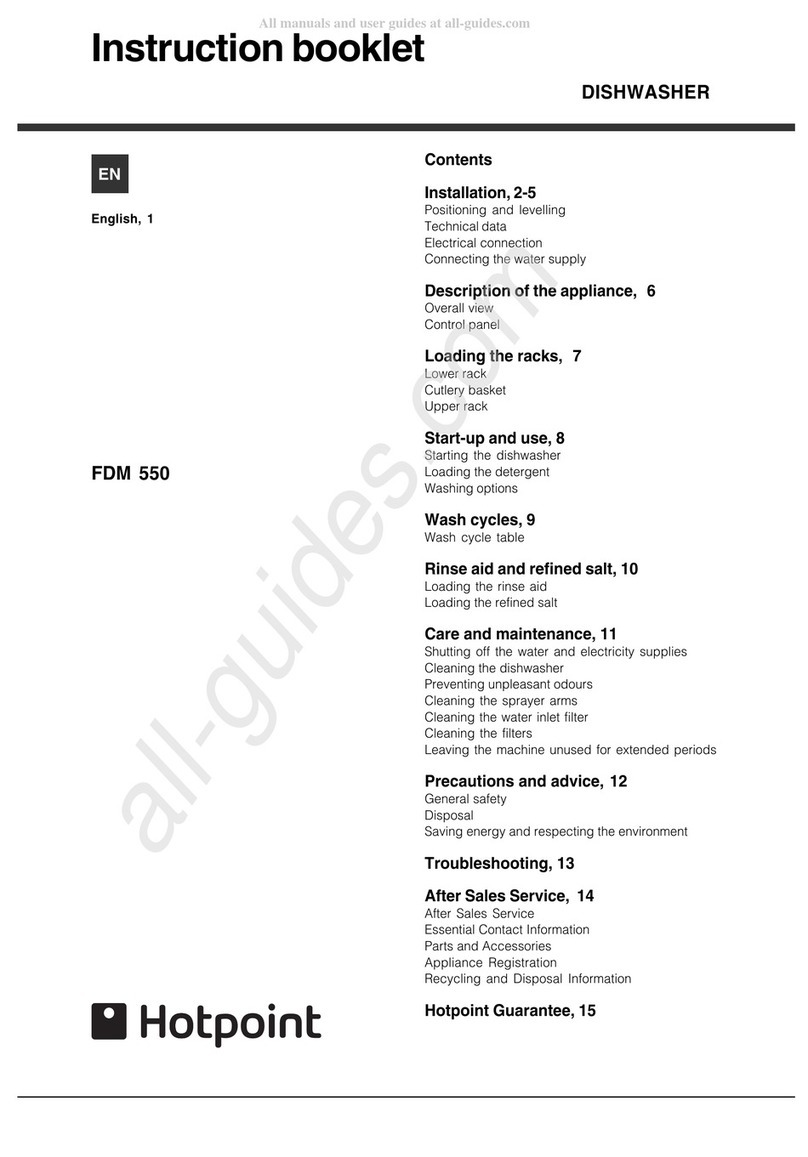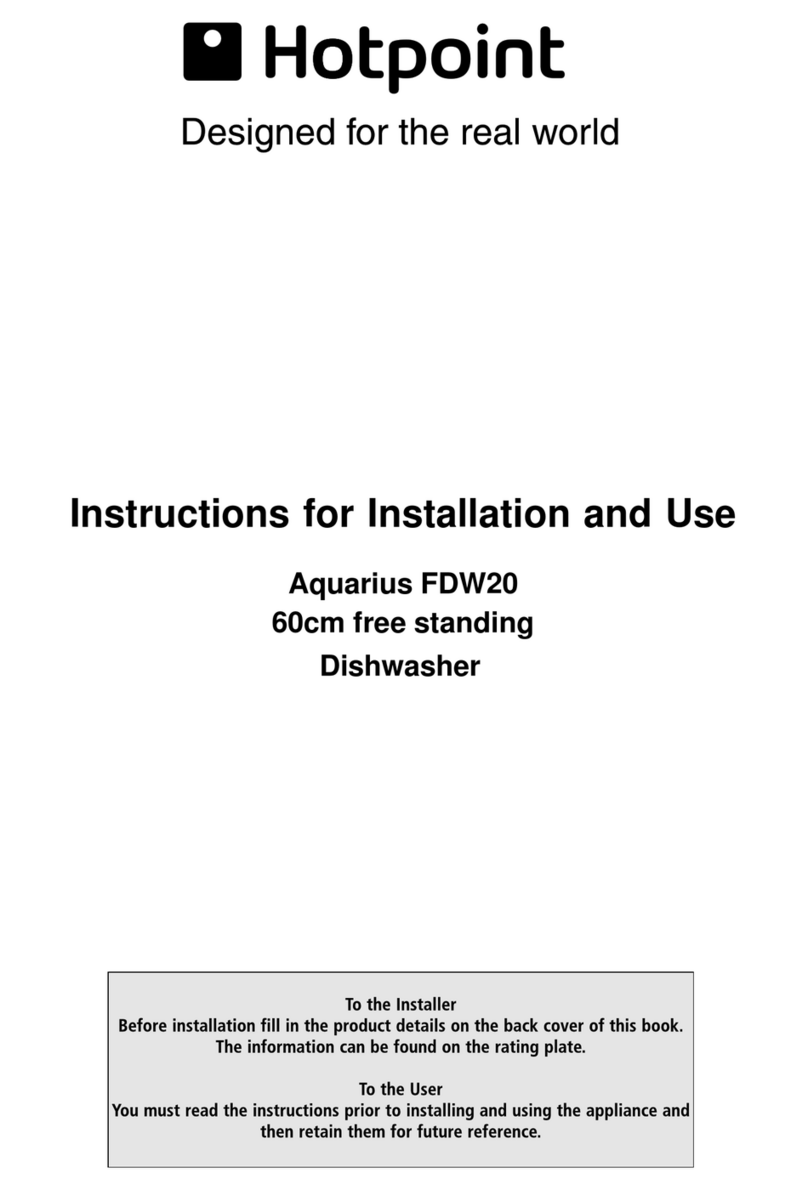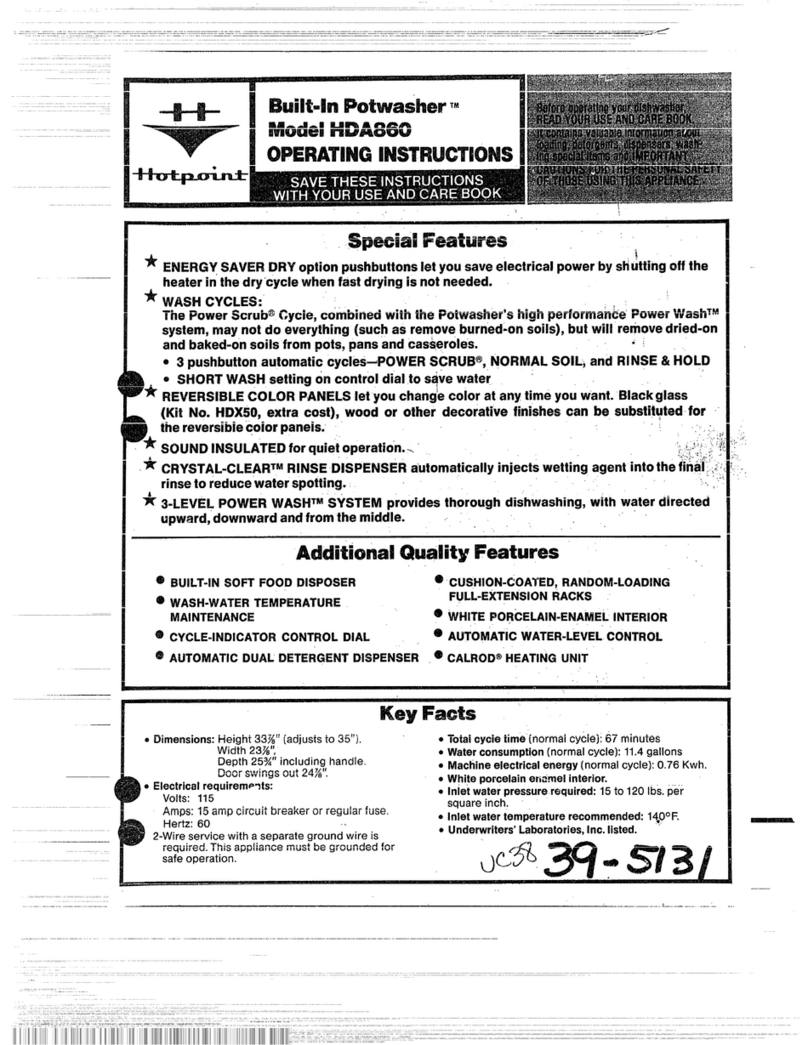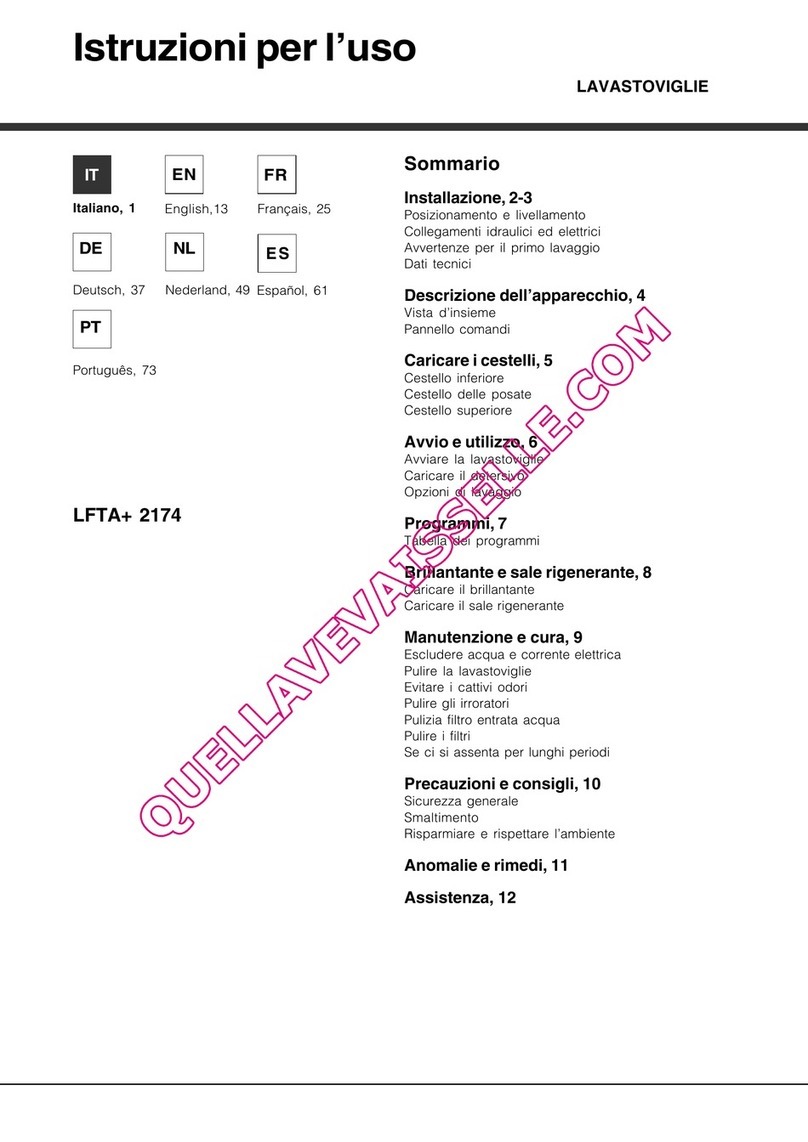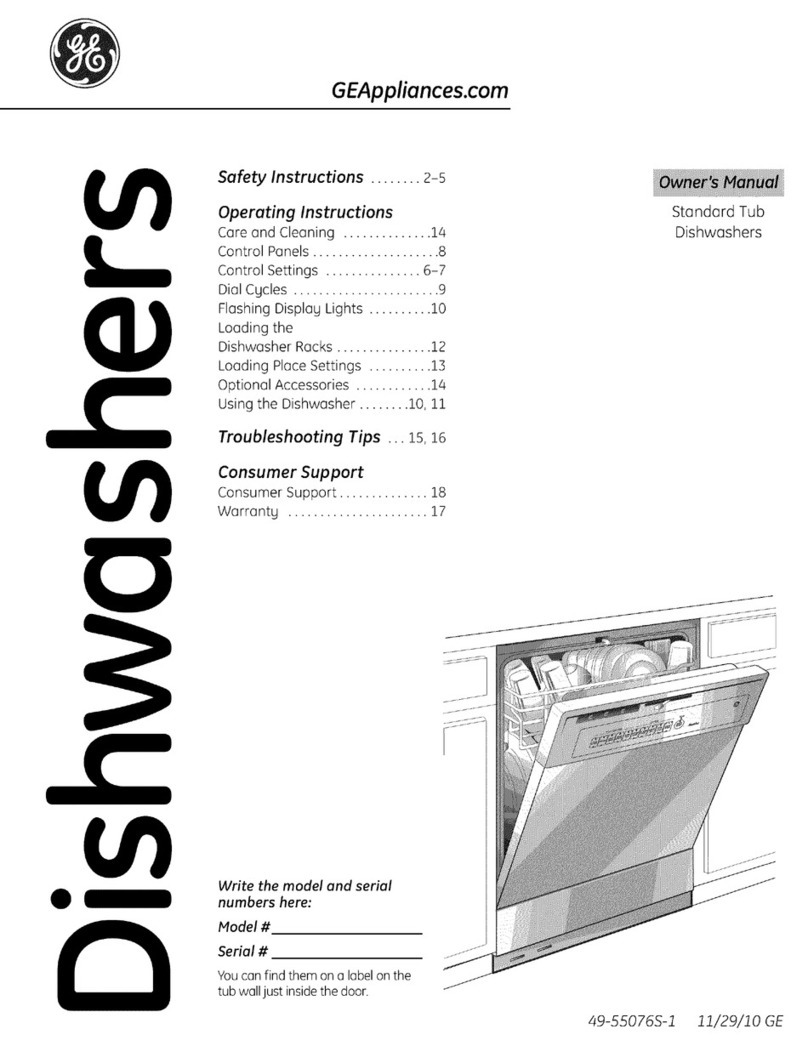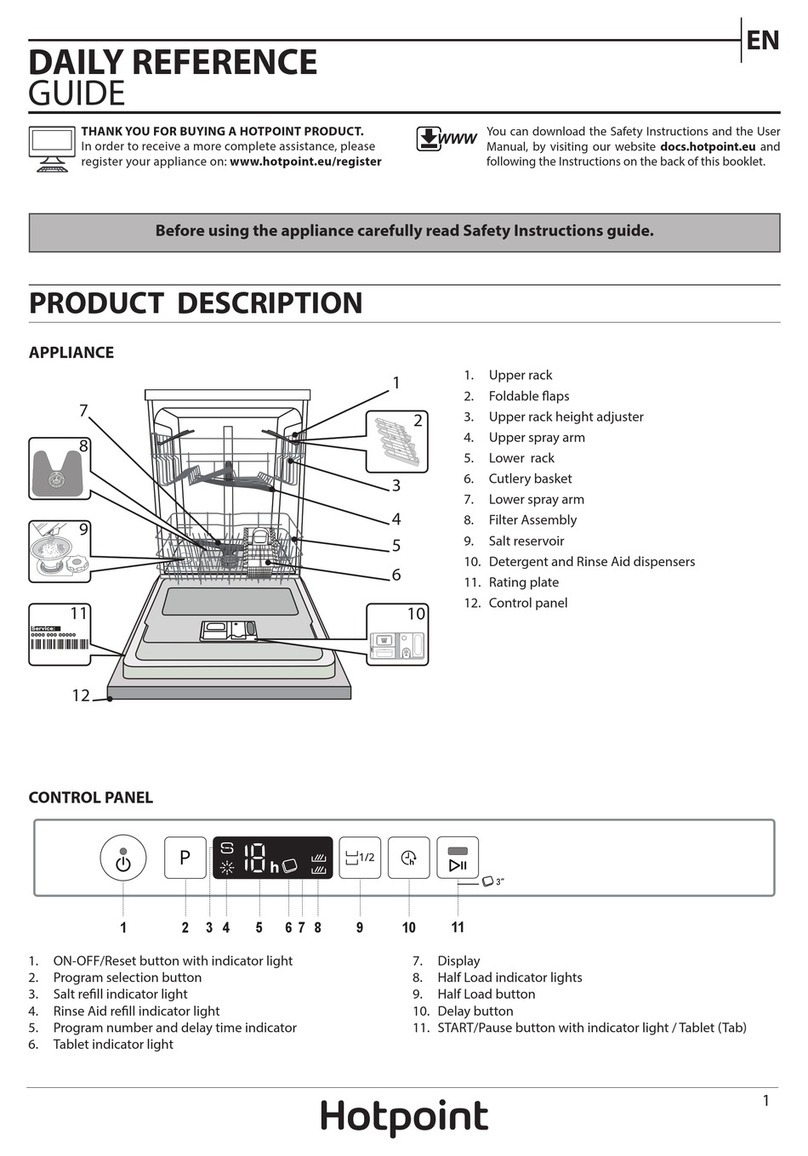10
EN
G
H
F
Rinseaid and refined salt
Only use products which have been specifically
designed for dishwashers.
Do not use table salt or industrial salt, or washing
up liquid.
Follow the instructions given on the packaging.
If using a multi-functional product it is not necessary to add
rinseaid;however, we recommendthat you add salt, especially
if you live in an area where the water is hard or very hard.
Followtheinstructionsgivenonthepackaging.
If you do not add salt or rinse aid, the LOW
SALT*and LOW RINSE AID*indicator lights remain
lit.
Measuring out the rinse aid
Rinseaid makes it easierforthe crockery to dry,aswater runs off
surfaces more readily and therefore does not leave streaks or
marks.
The rinse aid dispenser should be filled:
•WhentheLOWRINSEAID*indicator light on the control
panelis illuminated; 1. Open the dispenser by turning
the lid (G) in an anticlockwise
direction.
2.Pourin therinseaid,makingsure
it does not overflow from the
dispenser. If this happens, clean
the spill immediately with a dry
cloth.
3. Screw the lid back on.
NEVERpourthe rinse aiddirectly
into the appliance tub.
Adjusting the amount of rinse aid
If you are not completely satisfied with the drying results, you
may adjust the quantity of rinse aid used. Use a screwdriver to
turnthe dosage adjuster (F) to one of the 6 pre-set positions (the
default position is set to 4):
• If there are streaks on the crockery, set the adjustment device
to a lower number (1-3).
•If drops ofwaterremain on thecrockeryor if thereare limescale
markspresent after the cycle has finished, set the adjusterto a
higher number (4-6).
Setting the water hardness
Every dishwasher is equipped with a water softener which, by
usingrefined salt designed especially for this type of appliance,
supplies water without limescale which is then used to wash the
crockery.
This dishwasher offers a setting which helps to reduce pollution
andoptimiseswashing performancein accordancewith thewater
hardness level in your area. This information can be obtained
fromthe organisation which supplies your household with water.
- Open the door and switch on the machine by pressing the
ON/OFF button.
- Press the Pbutton and hold for approximately 5 seconds; two
short beeps will sound and the indicator light corresponding to
the set degree of hardness will flash slowly on the control panel
(the water softening system is set to number 3).
- Press the P button repeatedly until the desired hardness level
has been reached (1-2-3-4-5*
see Water hardness table
).
E.g. hardness 1 (indicator light 1 flashing)
hardness2 (indicatorlight 1 illuminated,indicator light2flashing).
hardness 3 (indicator lights 1 and 2 illuminated, indicator light 3
flashing and so on).
- To exit the function, wait a few seconds or press one of the
option buttons*, or switch off the machine using the ON/OFF
button.
Even if using multi-functional tablets, the salt dispenser should
stillbe filled.
(°dH = hardness measured in German degrees - °f = hardness
measuredinFrenchdegrees-mmol/l=millimolesperlitre)
Measuring out the refined salt
In order to achieve the best possible results using a wash cycle,
makesurethat thedispenser isnever empty.Refined saltremoves
limescalefrom the water, thus avoiding the formation of deposits
on crockery.
The salt dispenser is located in the lower part of the dishwasher
(
see Description
)and should be filled:
• When the green float*cannot be seen by simply looking at the
cap of the salt dispenser.
• When the LOW SALT*indicator light on the control panel is
illuminated; 1. Remove the lower rack and unscrew the
containercap (anticlockwise).
2. The first time you do this: fill the water tank
right up to its edge.
3. Position the funnel*(
see figure)
and fill the
saltcontainer right up to its edge (thisshould hold approximately
1 kg); it is not unusual for a little water to leak out.
4. Remove the funnel* and wipe any salt residue away from the
opening;rinse the cap under running water and then screw it on,
the head facing downwards so as to let the water flow out of the
four cracks which are arranged in a star shape on the lower part
ofthe cap. (the container cap with the green float*)
It is advisable to perform this procedure every time you add
salt to the container.
Makesure the cap isscrewed on tightly, so thatno detergent can
get into the container during the wash cycle (this could damage
the water softener beyond repair).
When necessary, measure out the salt before a wash cycle
sothatanysalinesolutionwhichhasleakedoutof thesaltdispenser
is removed.
*Only available in selected models.
Water Hardness Table Average salt container
capacity duration**
Level °dH °fH mmol/l months
1 0 - 6 0 - 10 0 - 1 7 months
2 6 - 11 11 - 20 1,1 - 2 5 months
3 12 - 17 21 - 30 2,1 - 3 3 months
4 17 - 34 31 - 60 3,1 - 6 2 months
5*
34 - 50
61 - 90
6,1 - 9
2/3 weeks
For values between 0°f and 10°f, we do not recommend the
use of salt.* this setting may cause a slight increase in the
duration of the cycles. **for 1 wash cycle per day.
